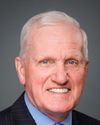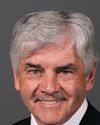Mr. Speaker, the answer is as follows:
(a) Approximately 1000 service personnel from the United States participated in this exercise. Units involved from the United States Navy were the Frigate USS Ingraham and the Fast Combat Stores Support Ship USS Bridge, both from the US Navy’s 3rd Fleet. Units from the United States Air Force included a number of F-15 Fighters, F-16 Fighters, B-52 Bombers, KC-135 Air Refueling Tankers, EA6B Electronic Warfare aircraft and E2C Airborne Early Warning aircraft. Units from the US Air National Guard included a number of F-15 Fighters. During the exercise, 20 US aircraft operated in Canadian airspace from American bases.
(b) Approximately 1200 service personnel from a variety of nations participated in the exercise. Units involved included the NATO Airborne Early Warning Squadron from Geilenkirchen, Germany with a multi-national crew in the E3A Airborne Early Warning aircraft and the Royal Air Force, RAF, flying the E3D Early Warning Aircraft.
(c) Yes, some of the aircraft participating in the exercise can be reconfigured to carry nuclear weapons. However, their participation in this exercise was for training only and only training armament was used.
(d) The employment of nuclear weapons was not a component of Exercise Trident Fury and as a training event, there was no reason for any vessel or aircraft to carry them, either live or simulated. Nonetheless, the United States security policy is that the American forces will neither confirm nor deny the presence of nuclear weapons at anytime and anywhere in the world. However, on September 27, 1991, President George H.W. Bush announced that the United States would eliminate all of its nuclear artillery shells and short-range nuclear ballistic missile warheads from surface ships, attack submarines and land-based naval aircraft and that they would not be carried in routine operations. Other, non-US participants of the exercise brought non-nuclear capable aircraft.
(e) Exercise Trident Fury 06 is the second annual Trident Fury exercise. Since this is a routine exercise, it was assessed that it posed no heightened risk of a terrorist attack.
(f) Yes, an extensive number of public and government briefings were held and the public affairs section of Maritime Forces Pacific initiated contact with all major and local news organizations to provide comprehensive and informative briefings. The objective of this plan was to raise public understanding of the requirement for conducting joint and combined exercises as they contribute to national security. The plan is based on proactive media and community relations. This was accomplished by providing media with as many opportunities as possible to witness operations first hand. Public viewing areas at the airport and flying schedules were disseminated to the public. An initial news release was published May 9, prior to the exercise and high profile or significant event news releases were issued throughout the exercise. Commander Canadian Fleet Pacific and staff made a presentation to North Saanich town council to explain the scope and importance of the exercise and speak to any potential concerns.
(g) All possible measures to mitigate the impact on the public and the environment have been carried out. The Trident Fury 06 exercise directive specifically promulgated extensive directions to all participating units regarding environmental concerns, including but not limited to the following:
--the protection of marine mammals and sea life;
--mitigation measures to be undertaken during surface to air firings and air to air firings;
--mitigation measures to be undertaken during simulated mine laying exercises;
--safe handling procedures for hydrocarbon products;
--the protection of vegetation, soils and wildlife; and,
--vehicle movement and water crossing procedures.
(h) Yes, Maritime Forces Pacific Formation Risk Management Office coordinated and conducted the necessary environmental assessments in respect of all live weapons firings and the basing and operation of participating air and ground units. The Department of National Defence carried out a series of due diligence environmental impact studies in accordance with international, federal, provincial and municipal environmental standards and regulations. Joint Task Force Pacific and the Maritime Forces Pacific are committed to both the letter and the spirit of environmental laws and regulations and are continually striving to anticipate and improve risk management practices, particularly as they relate to the preservation of the unique eco-systems and wide spectrum of marine mammals and animals that inhabit the region. The “Marine Mammal Mitigation” plan was extremely comprehensive and takes into account the wide, varied and sensitive ecosystems that make the area what it is.
(i) All possible measures to mitigate the impact on the public and the environment have been carried out. The Trident Fury 06 exercise directive specifically promulgated extensive directions to all participating units regarding environmental concerns. To this end the Department of National Defence has gone beyond the international, federal, provincial and municipal standard to ensure all aspects of our risk management processes were in place and were monitored. We believe that we have taken all reasonable steps to safeguard the environment and to ensure that our activities do not in any way compromise the environment. All foreign exercise participants were subject to the same strict rules and guidelines as Canadian participants. Since this was a routine exercise, it was assessed that it posed no heightened security risks.




















